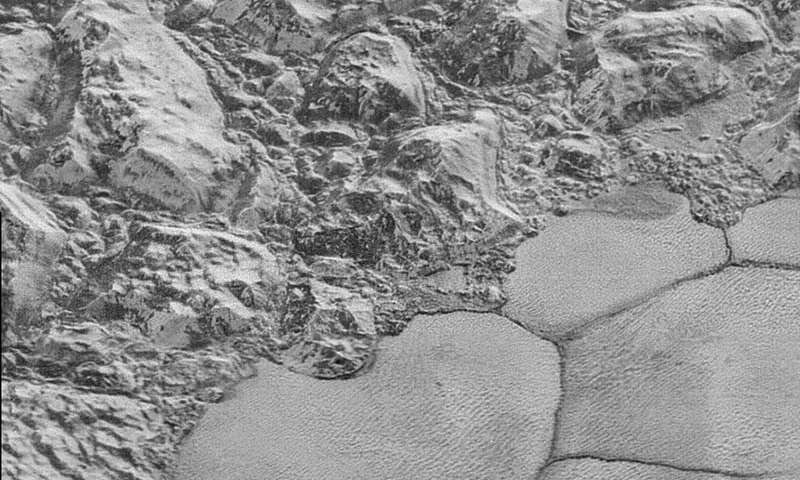Best of Last Week – New kind of carbon, best images yet of Pluto and a diabetic drug that favorably affects gut bacteria

(ScienceX)—It was another good week for physics as one team of researchers at North Carolina State University found a new phase of carbon and made diamond at room temperature—it is called Q-carbon and is distinct from any known phase of regular diamond or graphite. Another team of international researchers announced that they were able to confirm thermodynamic irreversibility in a quantum system—despite quantum theories based on time-symmetry. And a team working with the U.S. Department of Energy's Holometer ruled out a theory of space-time correlations—they used the super-sensitive device to rule out Hogan's theory of a pixelated universe to a high level of statistical significance.
It was also a pretty big week for space science as one team of astronomers studying data from the Green Bank Telescope found a detailed record of a mysterious fast radio burst—which revealed that the burst came from a highly magnetized particular region of space. Also, NASA's space probe New Horizons returned the first of the best images yet of Pluto—and they were quite impressive. There were also reports of new developments in the study of black holes; researchers working with the Event Horizon Telescope detected magnetic fields at Milky Way's central black hole, and another team of astrophysicists found evidence that the jet of a black hole was driving multiple winds in a nearby galaxy—specifically, galaxy IC5063; the distances were as great as 3000 light years.
In other news, there was a report that Chinese 'clone factory' scientists are eyeing human replication—Boyalife Group chief executive Xu Xiaochun hinted to the press that the group might be considering such a move as he outlined a sequence of research projects the team is working toward, moving from cloning racehorses to dogs and eventually to non-human primates, which would, of course, make the jump to human cloning a looming possibility. Another team of researchers at North Carolina State University announced that they had confirmed original blood vessels in an 80 million-year-old fossil. The results offer more evidence that blood vessels and other such soft structures can persist over millions of years.
And finally, if you are one of the millions of diabetic people taking metformin to help manage the disease, you might want to look into the results of a study by a team of Chinese and European researchers—they found that intestinal bacteria are affected by the antidiabetic drug—and the changes are favorable.
© 2015 ScienceX